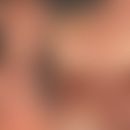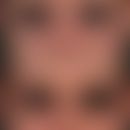Synonym(s)
HistoryThis section has been translated automatically.
Herxheimer 1899
DefinitionThis section has been translated automatically.
This is usually caused by accidental exposure to halogenated aromatic hydrocarbons, which are released, for example, in industrial accidents. Also in case of feed contamination and poisoning. Dioxin plays a special role in triggering chloracne. Perchloronaphthalene is the trigger of the PERNA disease.
You might also be interested in
EtiopathogenesisThis section has been translated automatically.
Triggers are polychlorinated and polybrominated naphthalenes and biphenols, polychlorinated dibenzodioxins, tetrachloroazobenzene, tetrachloroazooxybenzene.
Halogenated hydrocarbons bind to the dioxin receptor, a cytosolic and nuclear transcription factor which plays an important role in the regulation of cell growth and cellular differentiation.
Halogenated aromatic hydrocarbons interrupt endocrine signaling axes and increase carcinogenesis.
LocalizationThis section has been translated automatically.
ClinicThis section has been translated automatically.
Contamination can occur via the skin, the gastrointestinal tract or the respiratory tract. Creeping or peracute chloracne usually appears a few weeks after contamination as a monitoring sign of intoxication.
Multiple open and closed comedones and inflammatory cysts form in all areas with terminal hair and sebaceous gland follicles. Also acne-inversa-like and acne-conglobata-like symptoms.
Systemic side effects include neurological, cardiological, nephrological and gastrointestinal damage.
General therapyThis section has been translated automatically.
Quick and thorough removal of sources of contamination (including contaminated clothing).
External therapyThis section has been translated automatically.
Internal therapyThis section has been translated automatically.
Operative therapieThis section has been translated automatically.
LiteratureThis section has been translated automatically.
- Bock KW (2016) Toward elucidation of dioxin-mediated chloracne and Ah receptor functions. Biochem Pharmacol 112:1-5.
Incoming links (7)
Acne medicamentosa; Bridge scars; Comedogenicity; Dermatitis, acute follicle-bound toxic; Halogen acne; Perna disease; Professional acne;Outgoing links (11)
Acne conglobata; Acne inversa; Cryosurgery; Curettage; Dermabrasion; Electrocoagulation; Isotretinoin; Keratolytics; Komedo; Retinoids; ... Show allDisclaimer
Please ask your physician for a reliable diagnosis. This website is only meant as a reference.




